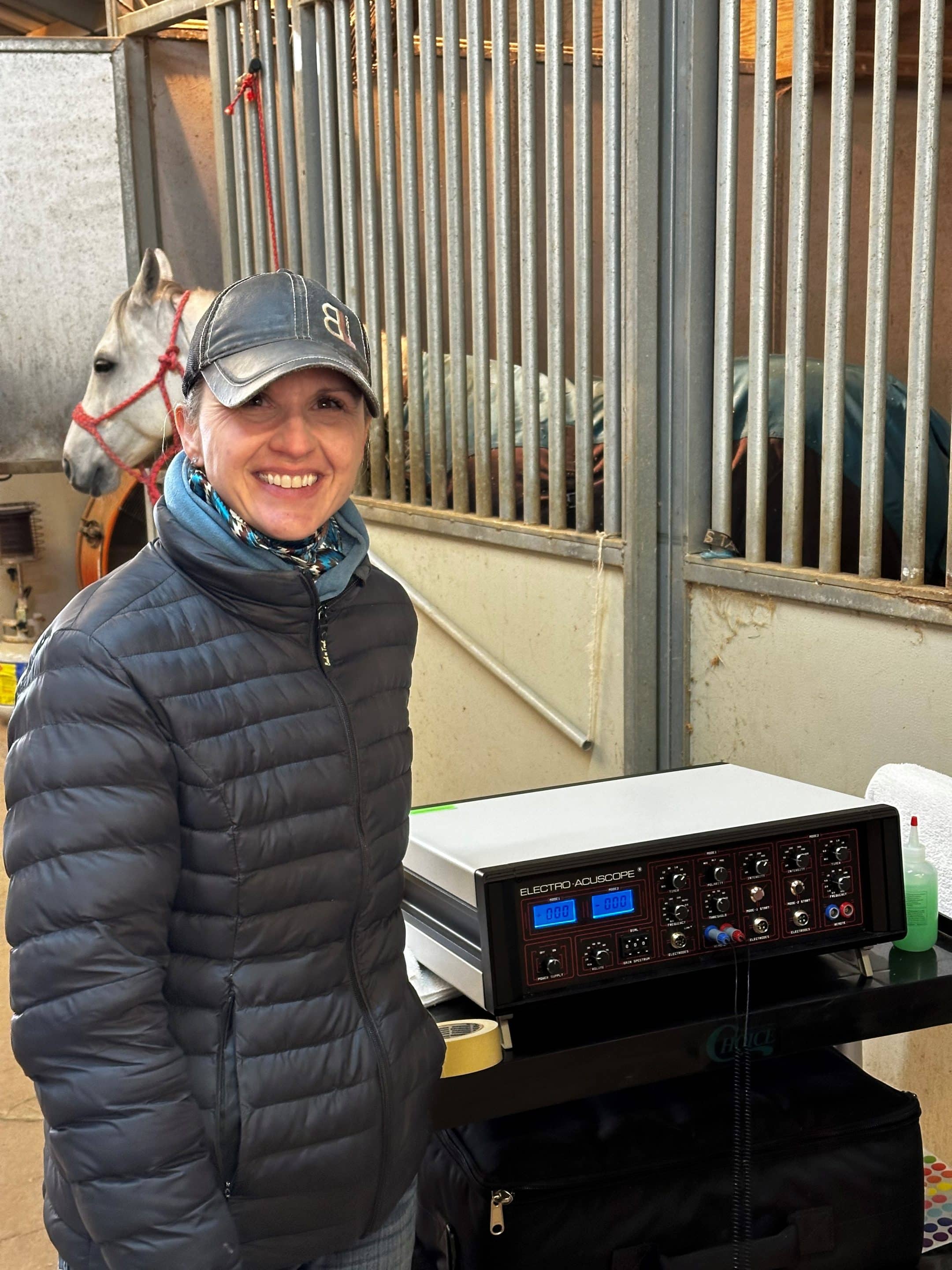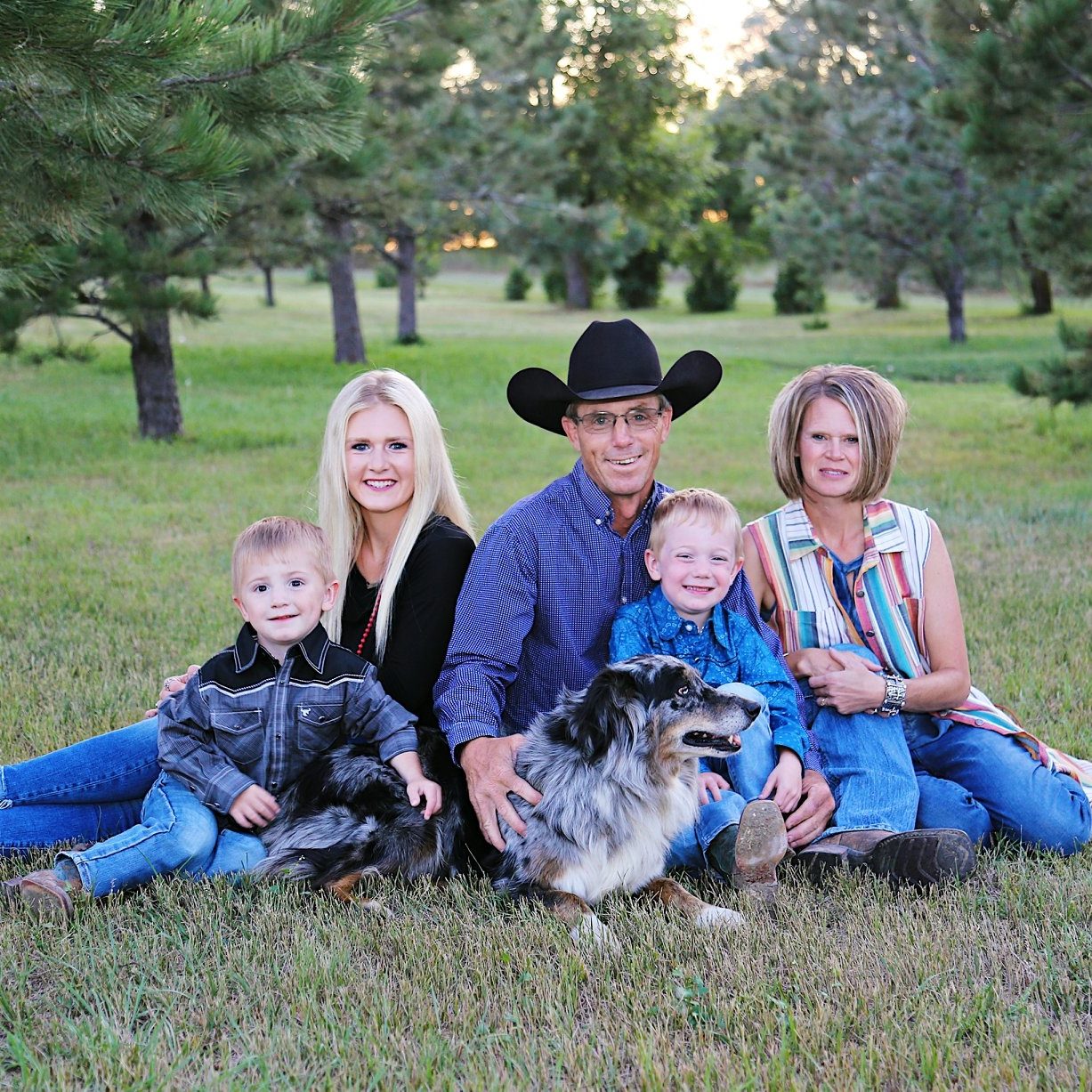The growth of the equine industry has spurred developments in equine sports medicine, enhancing longevity and athletic potential. As these advancements continue to evolve, equine owners have more opportunities to make informed decisions using specialized services. This progress is transforming the way horses are cared for, leading to improved performance and overall well-being across various disciplines.
Connie Buck is based out of Minot, North Dakota. Buck has combined her 25 years of experience in Occupational Therapy with her passion for equine health to establish, Presence Therapy Services. Buck offers a scientifically backed alternative approach, supporting equine health and performance, focusing on addressing injuries and illnesses. Buck offers an informational overview of her services, driven by her commitment to serving the equine industry.
What was the inspiration behind launching a business focused on enhancing equine health using an Electro-Acuscope/Myopulse Therapy System?
“Like most things, Presence Therapy Services emerged from necessity. A few years back, my good barrel horse was diagnosed with mild spinal arthritis, prompting me to take proactive steps to ensure this diagnosis wouldn’t hinder our performance goals. During that period, I felt as though ‘therapy’ services were everywhere you looked, but the science and training behind it didn’t align with my professional experience. As an occupational therapist, I understand that rehabilitation goes far beyond simply purchasing a machine from a well-marketed company and following instructional videos.”

Buck in action. [Photo: submitted]
Please elaborate on the system you use and the advantages it offers.
“The ATS Electro-Acuscope/ Electro-Myopulse System utilizes low frequency electrical current that matches levels produced naturally in the body allowing for replenishment of current and re-establishment of pathways required for self-repair.”
“The program I offer utilizes Acuscope’s patented biofeedback system to guide my clinical observations and judgment to develop a discipline specific program for conditioning and recovery. Combining a detailed assessment with consistent follow-up sessions creates a highly effective and evidence-based approach for horse owners looking to enhance performance, improve overall health, reduce injury risk, and accelerate recovery time. Each treatment plan is individualized and formed in collaboration with the horse owner (and veterinarian in a rehabilitation situation).”
As part of your dedication to equine health, you’ve cultivated a learning space for horse owners through social media and your website, covering diverse topics. This initiative provides a platform for individuals to exchange knowledge and glean insights from the content shared. Please unbridle your “WHY”, elaborating on the driving force behind your platform.
“Knowledge is power; the more we understand about how to properly care for our animals, the healthier and happier they will be. We need to ask questions, conduct independent research to ensure the information we gather is evidence based, rather than relying on personal experience or opinions that are masqueraded as science based. My goal is to encourage horse owners to realize that there is no “one size fits all” when it comes to caring for their equine companions.”
How does your platform integrate with your background, which includes a master’s degree in occupational therapy and 25 years of experience in the field?
“Obtaining a degree in occupational therapy requires extensive education in anatomy, physiology, neurology, biomechanics, and kinesiology. We are taught how to evaluate dysfunction, collect data on baseline functioning as well as progress monitoring. Therapists learn objective clinical reasoning skills and system analysis techniques, allowing us to develop an evidence-based assessment and care plan for a variety of physical and neurological dysfunction.”
“My education and experience allowed for a smooth transition into equine therapy services. Many of the same methods spill over in the equine treatment plans, allowing me to take advantage of the knowledge I have. I also obtained additional certification in equine performance optimization, rehabilitation, and recovery before completing the rigorous coursework to become a certified ATS Equine therapist.”
As your journey evolves, what is your vision for Presence Therapy Services?
“The objective of an effective therapist is to empower their clients to no longer need their service. In human rehabilitation we have a limited amount of time to return the client to their prior level of function. The effectiveness of the ATS Electro-Acuscope/Myopulse system enables achieving optimal results in minimal number of sessions.”
“As far as the future, the options are wide open. I currently love my role as a Pediatric Occupational Therapist and don’t anticipate transitioning to full time private practice just yet. Due to the impressive results of equine microcurrent therapy systems, I would like to add a human calibrated Acuscope as finances allow. I plan to build on the educational segment by providing mini courses on a variety of equine and pediatric therapy topics. Eventually, I would like to combine the two and offer animal assisted occupational therapy services, specifically for children with developmental disabilities and trauma informed therapy with adolescents.”





